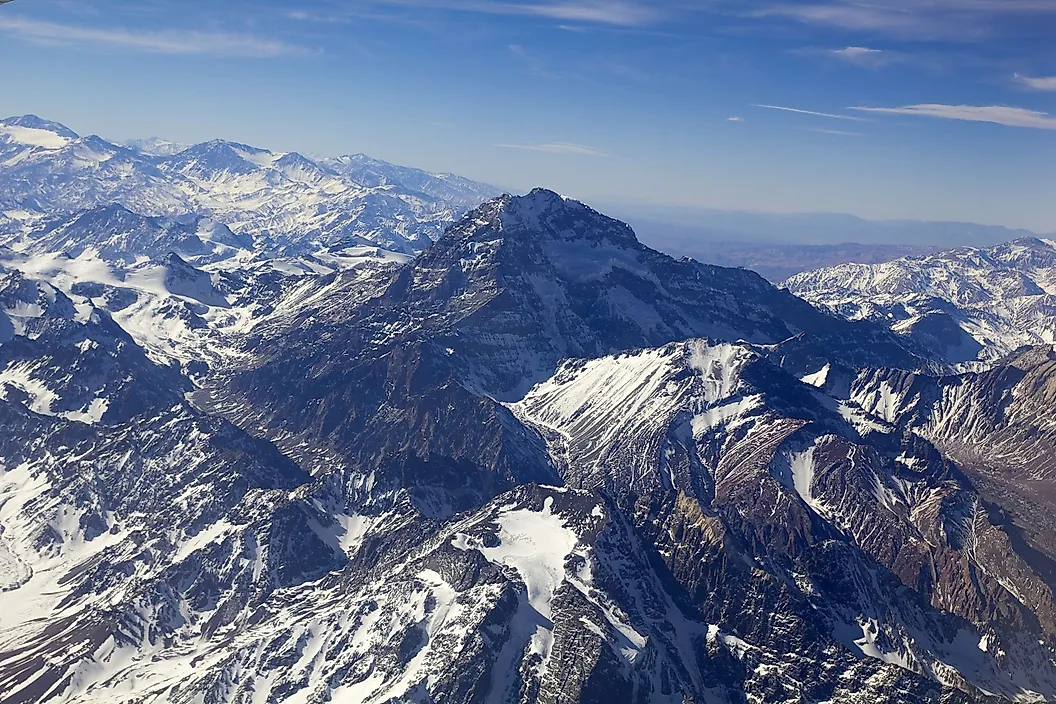Tallest mountain on each continent
The World's Highest Mountains by Continent are:
- Mount Everest - Asia: Aconcagua - South America:
- Denali (Mount McKinley) - North America:
- Kilimanjaro - Africa:
- Mount Elbrus - Europe:
- Vinson Massif - Antarctica:
- Puncak Jaya (Carstensz Pyramid) -
- Oceania: Mount Kosciuszko - Australia
 |
| Credit:© ricktravel/stock.adobe.com |
Conquering the Peaks: The World's Highest Mountains by Continent;
Introduction:
Mountaineering has long captured the imagination of adventurers and thrill-seekers, pushing them to conquer the highest peaks on every continent. Known as the Seven Summits, and sometimes the Eight Summits, these majestic mountains test the limits of human endurance and determination. In this article, we will explore these remarkable peaks, taking you on a journey to the top of the world on each continent.
1. Mount Everest - Asia:
Standing tall at an awe-inspiring elevation of 8,848 meters (29,029 feet), Mount Everest reigns supreme as the highest peak on Earth. Located in the Himalayas on the border of Nepal and China (Tibet), this iconic mountain has captured the dreams of countless climbers, who brave extreme weather conditions and treacherous terrain to reach its summit.
2. Aconcagua - South America:
In the Andes mountain range in Argentina, Aconcagua claims the title of the highest peak in South America. Rising to an impressive height of 6,960 meters (22,837 feet), it presents a formidable challenge to climbers. Aconcagua's striking beauty and its status as one of the Seven Summits beckon mountaineers from around the world to test their skills and stamina.
 |
| {Fact Time}:(One of the Seven Summits, Aconcagua is the highest mountain in South America. At 6,962m, actually the highest mountain)|credit:Britannica |
3. Denali (Mount McKinley) - North America:
Located in Alaska, Denali, also known as Mount McKinley, is the highest peak in North America, reaching an elevation of 6,190 meters (20,310 feet). Denali's remote location and extreme weather conditions make it a formidable challenge for climbers, requiring meticulous planning and physical fitness.
4. Kilimanjaro - Africa:
Rising above the African continent, Mount Kilimanjaro is the highest freestanding mountain in the world, reaching 5,895 meters (19,341 feet). Situated in Tanzania, this iconic peak attracts adventurers seeking to conquer its snow-capped summit and experience the breathtaking landscapes and diverse ecosystems found along its slopes.
5. Mount Elbrus - Europe:
Located in the Caucasus Mountains of Russia, Mount Elbrus stands as the highest peak in Europe, soaring to a height of 5,642 meters (18,510 feet). This dormant volcano presents mountaineers with a mix of technical challenges, including glaciers and unpredictable weather conditions, as they strive to reach its summit.
 |
| {Fact time}Breathtaking Views: On exceptionally clear days, Mount Elbrus offers stunning views of the Black Sea, located 100 kilometers away, and the Caspian Sea, visible from the mountain's summit.|Credit:world atlas |
6. Vinson Massif - Antarctica:
In the frozen and desolate expanses of Antarctica lies the Vinson Massif, the highest peak on the southernmost continent. Reaching an elevation of 4,892 meters (16,050 feet), this remote and frigid mountain poses unique challenges to climbers, including extreme cold, ice formations, and logistical hurdles.
7. Puncak Jaya (Carstensz Pyramid) - Oceania:
Among the lush jungles of Papua, Indonesia stands Puncak Jaya, also known as Carstensz Pyramid. This peak, at 4,884 meters (16,024 feet), is the highest in Oceania. Climbing Puncak Jaya involves navigating dense vegetation, and technical rock formations, and requires a permit due to its political sensitivity.
.
8. Mount Kosciuszko - Australia:
Some climbers consider Mount Kosciuszko, located in Australia's Snowy Mountains, as the highest peak in Oceania, even though it is significantly lower than Puncak Jaya. Standing at 2,228 meters (7,310 feet), this mountain offers a comparatively less challenging climb, attracting adventurers who wish to complete the Seven Summits list.
Conclusion:
Conquering the Seven Summits, or the Eight Summits for some, is a monumental achievement that requires exceptional physical and mental strength. Each of these majestic mountains holds its own unique allure, drawing adventurers from around the world to test their limits and witness the awe-inspiring beauty of our planet. Whether it's scaling the towering heights of Mount Everest or exploring the frozen landscapes of Antarctica, the journey to these peaks is a testament to human resilience and the indomitable spirit of exploration.


Post a Comment